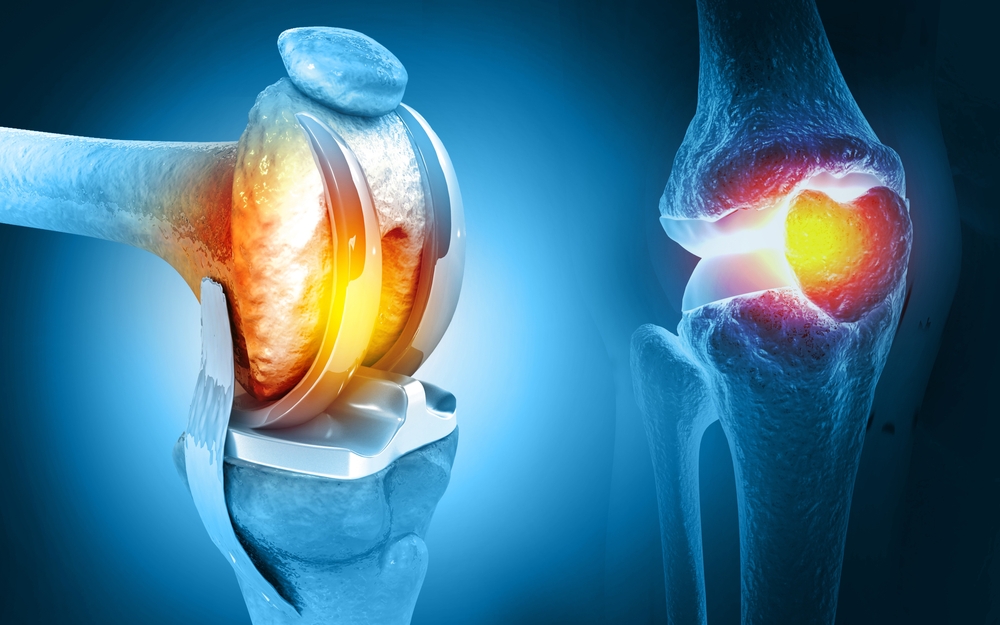Mythbuster: Joint replacements are for the elderly

Complete joint replacement surgery is usually meant when someone mentions obtaining a hip or knee replacement.
The hips and knees are among the most often replaced joints by surgeons out of all the joints that they operate on. The damaged cartilage is removed by an orthopaedic surgeon during complete joint replacement. The damaged joint portions are then replaced with specific metal, plastic, or ceramic components.
The most prevalent form of arthritis, osteoarthritis (OA), is relieved by this operation. Whenever the cartilage on the inside of a joint degenerates, OA develops. Your joints' smooth cartilage serves as a cushion. Over time, it deteriorates and becomes painful, swollen, and rigid. You can move with the new joint without the OA's discomfort and stiffness.
Total knee replacement surgery, once only performed on elderly patients with severe arthritis, is now increasingly frequently performed on younger, active patients. People in their 40s or 50s having severe knee arthritis who are not helped by more straightforward, non-surgical therapy may now be considered for this operation. However, there are issues with doing this operation on infants who are so young.
People who need joint replacement:
When deciding whether an individual is a suitable candidate for joint replacement surgery, factors such as the individual's general health, the seriousness of the joint issue, and the degree of impairment all come into play.
If the bones are too fragile to adequately support an implant, osteoporosis may in certain situations prevent a patient from having joint replacement surgery.
Even while age is a crucial determinant for any operation, including joint replacement, it is not the most essential one. It is one of several equally significant variables. Every case is different and needs to be judged on its own merits.
The correct considerations and assessments must underlie the choice to operate. Then, any remaining options should be tried and rejected. The execution must be expert and cutting-edge, as must the facilities.
The right age for knee replacement:
Nobody can definitively determine when a patient is too young for a complete knee replacement or what age is the tipping point. What is certain is that for certain younger individuals, the advantages of surgery may exceed the hazards. These advantages mainly consist of:
- Improved standard of living
- Decreased pain
- Possibility of preserving or enhancing fitness
When these objectives are achieved, patients may experience a decreased risk of various issues brought on by insufficient fitness, like cardiovascular disease.
Because the implant will be in place for an extended period of time, the primary risk of total knee replacement in younger patients is implant wear. Although implant manufacturers are working to reduce this risk, it remains a concern.
The degree of wear or tear on a knee joint replacement probably relates to the level of activity of the patient. Young people with joint replacements should be cautious and engage in only low-impact activities.
In general, doctors only advise specialised exercises for patients who have undergone total knee replacements. These consist of:
a) Low-impact exercises and cycling
b) Yoga, Swimming, Golf, Walking, and Hiking
c) Minimal-effort weightlifting
Factors to consider before joint replacement:
a) The replacement of the hip or knee does not have a one-size-fits-all method. Your operation will be customised by the surgical team. Additionally, you must consider the advantages and disadvantages of the procedure.
b) You should talk with your healthcare physician before having hip or knee replacement surgery.
c) Your general health, whether you have diabetes, heart disease, or both, medicines, muscle strength, and the support of family and friends.
Results and risks of surgery in younger patients:
In the United States, patients who have knee replacement surgery are currently on average 65 years old. Surgeons typically view patients under 50 as being too young for knee replacement. Nevertheless, the fastest-growing demographic for knee replacement surgery patients is those under 50.
Although, studies indicated that these procedures are effective. More than 85% of younger patients who receive knee replacements are satisfied with the results. Also, the complication rate is low. Ten years following surgery, more than 98% of the knee replacements that were given to these patients were still functional.
Knee replacement surgery carries hazards, just like any other medical treatment. The implant wearing out too soon is the main worry with younger, more active patients.
There are additional dangers as well, such as:
a) Infection
b) Stiffness
c) Blood clotting
Before deciding to undergo this operation, it is a good idea to talk over all these concerns with your doctor.
Conclusion:
Older patients have often had knee replacement surgery but there is mounting evidence now that knee replacements can be beneficial for those under 50 as well. Younger patients who have knee replacement surgery do run some risks, such as the likelihood that the implant would prematurely wear out. But as long as they stick to lower-impact sports, most knee replacement patients may continue an active lifestyle.
The replacement of a knee requires considerable surgical intervention. It has some significant potential dangers as a result. Regardless of age, anyone thinking about this operation should first attempt a non-surgical treatment under a doctor's supervision before getting a knee replacement.





